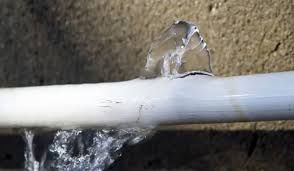Why Is My Garbage Disposal Making Strange Noises?
Garbage disposals are a blessing in the kitchen—until they start making unsettling noises. Whether it’s a rattling, humming, or grinding sound, strange noises from your garbage disposal often signal an issue that needs attention. Let’s dig into all the possible reasons behind those bizarre sounds, how you can fix them, and the best ways to maintain your garbage disposal.
"DIY Garbage Disposal Repair: What You Can and Can’t Do"
Reasons Your Garbage Disposal Is Making Strange Noises
1. Foreign Objects Lodged in the Disposal
Sometimes, a stray utensil or a hard item like a bone can find its way into the disposal. These foreign objects clash with the impellers, creating a loud rattling noise. If the noise persists, it’s essential to turn off the disposal immediately to prevent any further damage. Reaching into the disposal can be dangerous, so it’s wise to use tongs or a similar tool to retrieve the offending item. Always ensure the unit is unplugged or the circuit breaker is turned off before attempting any removal.
2. Loose or Damaged Blades
Over time, the disposal's internal components, such as blades, can loosen or get damaged. This can result in clunking or grinding sounds when the disposal is running. If you notice these noises, it’s important to address the issue promptly to prevent further damage. A loose blade can lead to inefficient operation, making it harder for the disposal to grind food waste effectively. In some cases, this may also cause the motor to overheat, potentially leading to a complete breakdown of the unit.
3. Worn-Out Bearings or Motor Issues
If your garbage disposal hums but doesn’t grind, the motor bearings might be worn out. This issue often indicates the disposal is nearing the end of its lifespan. In such cases, it’s advisable to first unplug the unit to ensure your safety before inspecting it further. Check for any jammed debris that may be obstructing the blades; often, a simple removal of the obstruction can restore functionality. If the disposal still hums after addressing potential jams, it might be time to consider a replacement.
4. Clogs in the Drain Pipe
A clog in the pipe connected to your disposal can create a gurgling or bubbling sound as water tries to push through the obstruction. This sound can be indicative of a blockage that needs addressing. Over time, food particles, grease, and other debris can accumulate in the pipes, preventing water from flowing freely. If left unresolved, this can lead to more serious issues, such as backups or even complete stoppages in your plumbing system.
5. Loose Mounting Screws or Components
A poorly mounted garbage disposal can vibrate excessively, producing rattling or shaking noises. This vibration can not only be bothersome but may also indicate that the unit is not securely fastened to the sink. If left unaddressed, these issues could lead to further complications, such as leaks or even damage to the plumbing. Proper mounting is crucial for the efficient operation of a garbage disposal.
6. Broken Flywheel or Jammed Parts
If the flywheel inside the disposal is jammed or broken, it may result in grinding or screeching noises as it struggles to move. .In such cases, it's crucial to address the issue promptly to avoid further damage. First, ensure the disposal is unplugged or the power is turned off to prevent any accidents while inspecting it. Use a flashlight to look inside and check for any visible blockages; items like bones, silverware, or fibrous materials can often get lodged in the mechanism. If you identify any debris, carefully remove it with tongs or a similar tool, being cautious not to damage the disposal's blades.
7. Improper Installation
If the disposal was installed incorrectly, you might hear irregular noises due to misalignment or poor connections. In addition, you may notice that the disposal struggles to effectively grind food waste, resulting in frequent jams or backups in the drain. This can lead to unpleasant odors and even potential plumbing issues if left unaddressed. It's crucial to check for any loose screws or clamps that could be causing the unit to vibrate or rattle excessively.
How to Fix a Noisy Garbage Disposal
1. Remove Foreign Objects Safely
Turn off the power to your garbage disposal (unplug it or switch off the circuit breaker). Use pliers or tongs to carefully remove any foreign objects. Never use your hands! If you encounter stubborn clogs, fill the sink with a bit of water and use a plunger to create suction, which can help dislodge the blockage. Avoid using harsh chemicals, as they can damage the disposal and pipes. Instead, consider a mixture of baking soda and vinegar for a natural cleaning solution; pour half a cup of baking soda followed by half a cup of vinegar into the disposal, let it fizz for a few minutes, then rinse thoroughly with hot water.
2. Tighten or Replace Loose Blades
Inspect the blades and other components for looseness. Tighten screws or bolts where needed. If the blades are damaged, consider contacting a professional for replacement. If the blades are damaged, consider contacting a professional for replacement and maintenance. Make sure to clean the blades using a soft cloth to remove any dust or debris that may have accumulated. Regular cleaning will help maintain optimal performance and prolong the lifespan of the device.
3. Clear the Flywheel and Reset
Use an Allen wrench to rotate the flywheel manually from the bottom of the unit. This can help dislodge jams. Don’t forget to press the reset button afterward! If the flywheel remains unresponsive after attempting to free it, consider checking for any debris or blockages around the unit. Carefully inspect the area and remove any foreign objects that may be obstructing the mechanism. It’s essential to ensure that the motor is unplugged before performing this check to ensure your safety.
4. Unclog the Drain
For clogs, use a plunger or a natural solution of baking soda and vinegar to clear the obstruction. Avoid chemical drain cleaners, as they can damage the disposal. If the clog persists after trying these methods, consider using a plumber's snake for a deeper clearing. Insert the snake into the drain and twist it to break up stubborn blockages. Be patient and gentle to avoid damaging the pipes. Additionally, regular maintenance can help prevent future clogs. Pouring a mixture of hot water and dish soap down the drain once a month can help keep grease buildup at bay. Remember, keeping the disposal clean and free of large food particles is key to maintaining its efficiency.
5. Inspect Mounting Hardware
Check the mounting screws and brackets to ensure the disposal is securely attached. Tighten any loose components to reduce vibrations and noise. Next, inspect the power cord for any signs of wear or damage. A frayed or damaged cord can lead to safety hazards or malfunctions. If you notice any issues, consider replacing the cord before proceeding. Additionally, check the drainage connection; ensure that it’s properly aligned and tightly secured to prevent leaks.
6. Address Motor Issues
If you suspect motor or bearing problems, it’s best to replace the disposal. Professional inspection can confirm whether repairs are worth it or if a new unit is needed. Additionally, consider the age of your disposal unit. Most disposals have a lifespan of about 10 to 15 years. If your unit is approaching or has surpassed this range, investing in a new model might be more economical in the long run, even if the current issue seems repairable.
7. Recheck Installation
If improper installation is the culprit, you might need to realign the unit or call a plumber to fix the issue properly. If the problem persists even after realigning, it's crucial to inspect the surrounding plumbing for any underlying issues that may be contributing to the malfunction. Look for leaks, corrosion, or blockages that could be affecting performance. Additionally, double-check all connections to ensure they are secure and that no fittings have come loose over time.
DIY Tips for Fixing Garbage Disposal Noise
Reset First: Always try the reset button before attempting major fixes.
Use an Allen Wrench: Most disposals come with a hex key for manual flywheel rotation to fix jams.
Clean It Regularly: Run ice cubes or citrus peels through the disposal to clean the blades and eliminate odors.
Avoid Harsh Chemicals: Stick to natural solutions for cleaning and unclogging.
How Can I Maintain My Garbage Disposal?
1. Use Cold Water While Running
Cold water helps solidify grease, making it easier to chop and prevent clogs.
2. Avoid Hard or Fibrous Foods
Keep bones, fruit pits, and fibrous veggies like celery out of your disposal to avoid jams.
3. Clean the Disposal Weekly
Pour a mixture of baking soda and vinegar down the disposal weekly to break down grease and food particles.
4. Run the Disposal Regularly
Even if you don’t use it often, running your disposal every few days prevents rust and obstructions.
5. Inspect for Wear and Tear
Check the unit periodically for loose parts, cracks, or other damage. Fixing small issues early can extend its life.
6. Don’t Overload It
Feed food scraps gradually to avoid overwhelming the motor and causing jams.
When to Call the Experts
While some fixes are DIY-friendly, strange noises might indicate a bigger problem that needs professional help. All City Plumbers specialize in garbage disposal repair and replacement, ensuring your unit operates smoothly and quietly.
Final Thoughts
A noisy garbage disposal isn’t just annoying—it’s often a sign of a problem. By understanding the causes, implementing fixes, and maintaining your disposal properly, you can keep your kitchen running smoothly. And when in doubt, don’t hesitate to reach out to the pros. All City Plumbers are here to help with any garbage disposal issue—big or small!
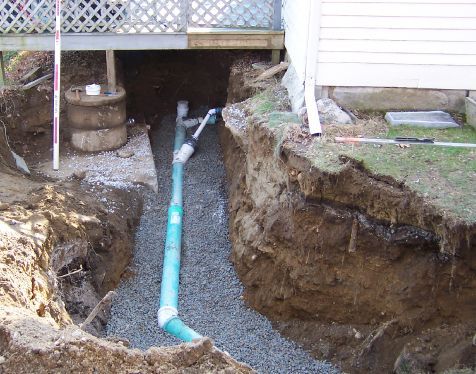

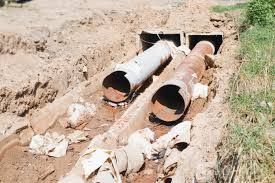
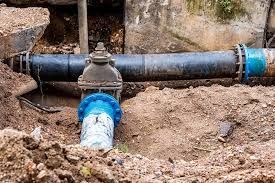

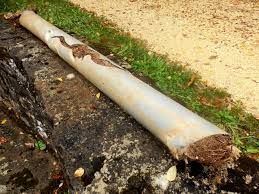
CONTACT INFORMATION
Office:
855-266-7682
Email:
service@AllCityPlumbers.com
Address: 6694 Oak Ridge Commerce Way, Austell, GA 30168
Business Hours:
Mon - Sun 24 Hours
OUR SERVICES
© 2022 All Rights Reserved|All City Plumbers Privacy Policy | Terms & Conditions | Sitemap

